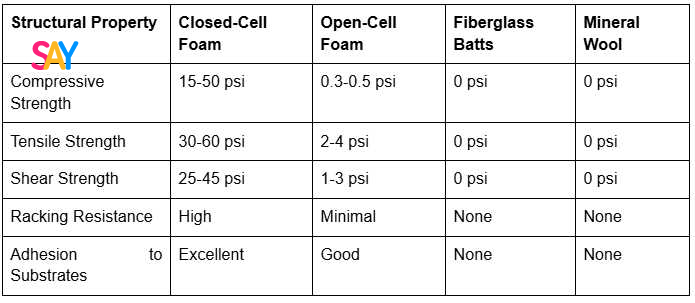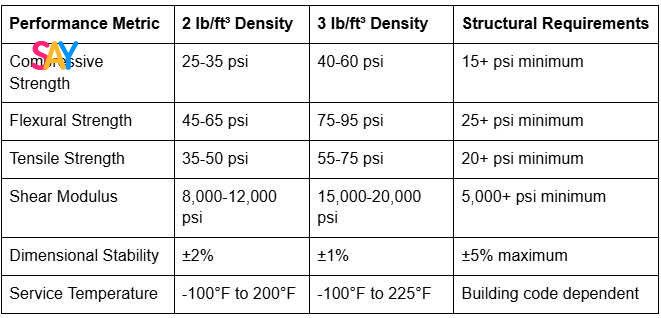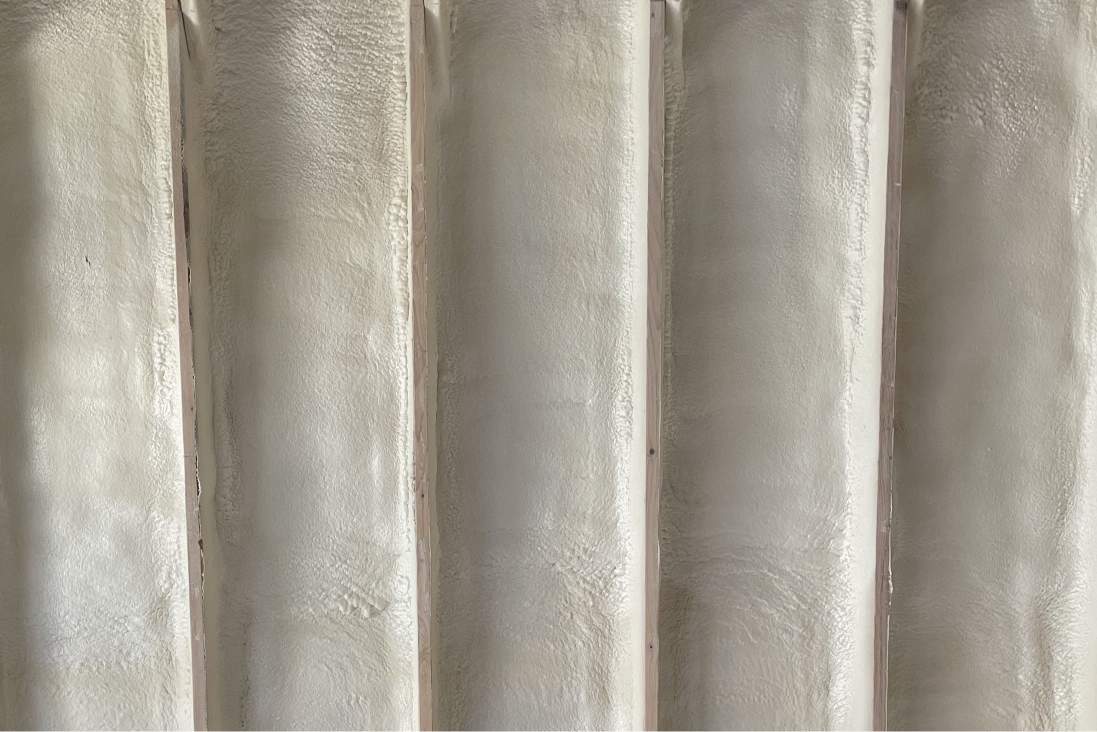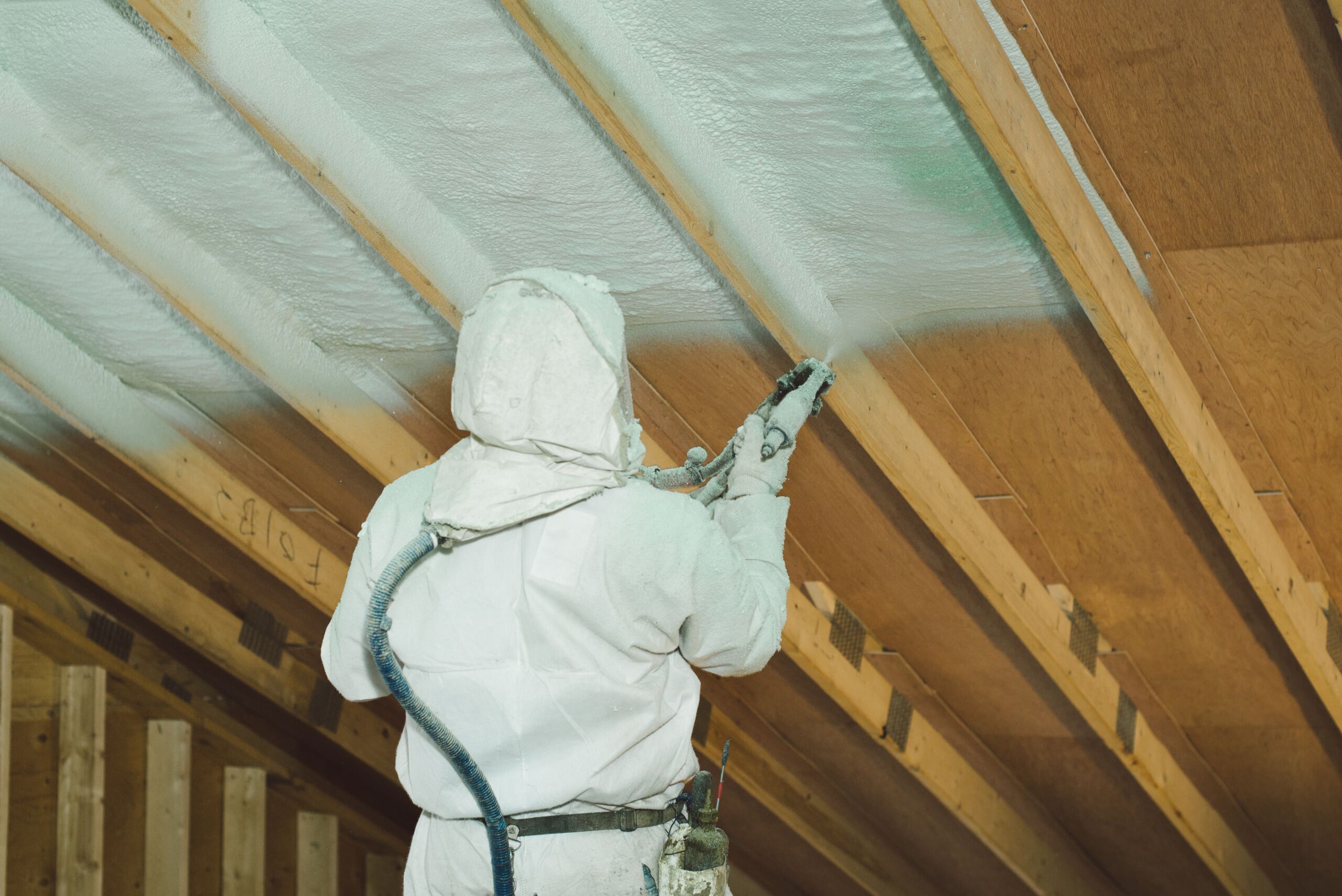Closed-cell insulation delivers superior structural support through its unique rigid cellular structure that adds significant compressive and tensile strength to building assemblies. This high-density foam material bonds directly to structural elements, creating a composite system that can increase wall strength by up to 300% compared to traditional insulation methods while maintaining excellent thermal performance.
The material's closed-cell structure creates millions of individual strength-bearing cells that distribute loads across the entire insulated surface. Engineering studies demonstrate that closed-cell insulation can add substantial racking resistance to wall systems, improve overall building stiffness, and provide meaningful structural reinforcement that helps buildings better withstand wind loads, seismic forces, and other structural stresses.
[Image: Cross-section diagram showing closed-cell foam structure bonded to wall framing with load distribution arrows]
Structural Enhancement Mechanisms
Closed-cell insulation transforms building assemblies from simple insulated cavities into integrated structural systems. The material's adhesive properties and rigid characteristics work together to create composite wall, roof, and floor systems with enhanced load-bearing capabilities.
Composite Action and Load Distribution
When applied to structural framing, closed-cell insulation creates composite action between the foam and building materials. This bonding effect distributes concentrated loads across larger areas, reducing stress concentrations that can lead to structural failure.
The foam's cellular structure transfers forces through its matrix, effectively turning insulated assemblies into structural panels. Research shows that walls with closed-cell insulation can resist lateral loads 200-400% better than conventionally insulated assemblies.

Bonus Tip: The structural benefits of closed-cell insulation become most apparent in applications where traditional framing methods may be marginal, such as long spans or areas subject to high wind loads.
Reinforcement Through Adhesion
Closed-cell insulation bonds chemically and mechanically to wood, steel, and concrete substrates. This adhesion creates a monolithic assembly that prevents the separation and movement that can compromise structural integrity over time.
The foam fills gaps and irregularities in framing, eliminating the weak points where traditional insulation cannot provide support. This gap-filling characteristic ensures that structural loads transfer efficiently throughout the building envelope.
Engineering Properties and Performance Data
Understanding the specific engineering characteristics of closed-cell insulation helps explain its superior structural support capabilities compared to alternative insulation materials.
Mechanical Strength Specifications
Closed-cell insulation exhibits measurable mechanical properties that contribute directly to structural performance. These properties remain consistent throughout the material's service life when properly installed and protected.
 Higher density formulations provide greater structural benefits but require careful application techniques to achieve proper coverage and adhesion.
Higher density formulations provide greater structural benefits but require careful application techniques to achieve proper coverage and adhesion.
Load-Bearing Capacity Analysis
Closed-cell insulation significantly increases the load-bearing capacity of building assemblies through its contribution to overall system stiffness. The material's modulus of elasticity allows it to share loads with structural framing elements.
Testing conducted by structural engineering firms shows that wall assemblies with closed-cell insulation can support 25-40% higher loads than identical assemblies with non-structural insulation materials.
[Image: Structural testing setup showing wall assembly with closed-cell insulation under load testing conditions]
Application-Specific Structural Benefits
Different building applications realize varying degrees of structural enhancement from closed-cell insulation based on loading conditions, span requirements, and environmental factors.
Wall System Reinforcement
Closed-cell insulation transforms wall assemblies into structural panels capable of resisting both in-plane and out-of-plane forces. This enhancement particularly benefits buildings in high-wind zones or seismic regions where lateral force resistance is critical.
The material's shear strength helps prevent racking deformation that can lead to door and window operation problems, drywall cracking, and other structural issues. Studies indicate that walls with closed-cell insulation maintain their structural integrity under loads that would cause failure in conventionally insulated assemblies.
Bonus Tip: The structural benefits compound when closed-cell insulation is applied to both sides of a wall assembly, creating a stressed-skin panel effect that maximizes load-carrying capacity.
Roof and Floor Deck Applications
Roof decks benefit from closed-cell insulation's ability to distribute concentrated loads from equipment, snow accumulation, and maintenance activities. The material prevents local deflection that can compromise roofing membrane integrity.
Floor applications gain enhanced stiffness that reduces vibration and deflection under live loads. This improvement is particularly valuable in residential applications where floor bounce and movement can cause comfort issues.
Foundation and Below-Grade Reinforcement
Closed-cell insulation provides structural benefits to foundation walls by adding compressive strength that helps resist soil pressure and freeze-thaw cycles. The material's moisture resistance ensures that structural properties remain stable in below-grade applications.
The insulation's ability to bridge minor cracks and irregularities in foundation walls helps maintain structural continuity and prevents the progressive deterioration that can occur with other insulation types.
Things to Consider Before Making a Decision
Several factors influence whether closed-cell insulation will provide optimal structural support benefits for specific applications. Proper evaluation ensures that the material's structural advantages align with project requirements.
Structural Design Integration
Buildings designed to take advantage of closed-cell insulation's structural properties may require modified framing approaches or engineering analysis. Some applications benefit from reduced framing requirements, while others need specific installation techniques to achieve maximum structural benefit.
Coordination between structural engineers and insulation specialists ensures that the foam's contribution to building strength is properly accounted for in design calculations and construction details.
Installation Critical Factors
Achieving maximum structural benefit requires proper installation techniques that ensure complete adhesion and uniform thickness. Incomplete coverage or poor adhesion can significantly reduce the structural advantages.
Environmental conditions during installation affect both application quality and final structural properties. Temperature and humidity must be controlled to achieve optimal foam expansion and curing.
Bonus Tip: Installation in multiple passes often provides better structural results than attempting to achieve full thickness in a single application, as it ensures better adhesion and more uniform density.
Long-Term Performance Considerations
Closed-cell insulation maintains its structural properties throughout the building's service life when properly protected from ultraviolet exposure and mechanical damage. The material's dimensional stability ensures that structural benefits remain consistent over time.
Regular inspection of exposed foam surfaces helps identify any damage that could compromise structural performance. Minor repairs can typically restore full structural capability when performed promptly.
Market Analysis and Industry Adoption
Industry data shows increasing adoption of closed-cell insulation for structural applications, with installation rates growing 25% annually in regions prone to severe weather events. Engineers increasingly specify the material for projects where structural enhancement provides significant value.
Building codes in hurricane-prone areas increasingly recognize the structural benefits of closed-cell insulation, with some jurisdictions allowing reduced fastening requirements for assemblies that include properly installed closed-cell foam.
Recent studies by building research institutes confirm that structures with closed-cell insulation show measurably better performance during extreme weather events, with reduced damage and faster recovery times compared to conventionally insulated buildings.
Common Questions About Structural Applications
Understanding frequently asked questions about closed-cell insulation's structural capabilities helps clarify appropriate applications and performance expectations.
Structural Code Compliance
Most building codes do not yet provide specific allowances for the structural contribution of closed-cell insulation, requiring conservative design approaches that may not fully utilize the material's capabilities. However, engineered designs can account for the foam's structural properties when properly documented.
Working with structural engineers familiar with foam insulation ensures that designs comply with applicable codes while maximizing the material's structural benefits.
Compatibility with Traditional Framing
Closed-cell insulation integrates well with conventional wood and steel framing systems. The material's structural contribution supplements rather than replaces traditional structural elements, providing enhanced performance without requiring major changes to standard construction practices.
The foam's ability to bond to various substrates makes it compatible with mixed-material construction approaches that combine different structural systems.
Performance Optimization Strategies
Maximizing the structural benefits of closed-cell insulation requires attention to application details and system design considerations. Proper planning ensures that the material's structural advantages are fully realized.
Thickness and Density Selection
Thicker applications generally provide greater structural benefits, but optimal thickness depends on specific loading conditions and framing requirements. Higher density foams offer superior structural properties but may require modified application techniques.
Balancing structural requirements with thermal performance and other building needs helps determine the most appropriate foam specifications for each application.
Integration with Building Systems
Closed-cell insulation works best when integrated with other building systems from the initial design phase. Coordination with mechanical, electrical, and plumbing systems ensures that structural benefits are not compromised by system installations.
Proper detailing around penetrations and transitions maintains the structural continuity that provides maximum benefit from the insulation's load-bearing capabilities.
[Image: Building cross-section showing integrated closed-cell insulation system with structural load paths highlighted]
Making an Informed Structural Enhancement Decision
Closed-cell insulation provides measurable structural benefits that can significantly improve building performance under various loading conditions. The material's unique combination of insulation and structural properties makes it valuable for applications where enhanced building strength is desired.
Evaluate your specific structural requirements, environmental conditions, and building design when considering closed-cell insulation for structural applications. Professional structural analysis can quantify the potential benefits and ensure that the material's capabilities align with project needs.
Consider the long-term value of enhanced structural performance alongside other building benefits when making insulation decisions. The structural advantages often provide significant value in areas subject to severe weather or where building durability is a primary concern.
Frequently Asked Questions
Can closed-cell insulation replace structural framing members? No, closed-cell insulation supplements but does not replace structural framing. It enhances the performance of existing structural systems rather than serving as a standalone structural element.
How much additional strength does closed-cell insulation provide? Strength increases vary by application, but wall assemblies typically see 200-400% improvements in lateral load resistance and 25-40% increases in overall load-bearing capacity.
Does the structural benefit decrease over time? No, properly installed closed-cell insulation maintains its structural properties throughout the building's service life when protected from damage and UV exposure.
Can existing buildings benefit from structural reinforcement with closed-cell insulation? Yes, retrofit applications can provide significant structural enhancement, particularly in wall and roof assemblies where the foam can bond to existing structural elements.
What building types benefit most from the structural properties? Buildings in high-wind zones, seismic areas, or structures with long spans or minimal framing benefit most from closed-cell insulation's structural enhancement capabilities.
Supreme Spray Foam Fresno
Contact 559545-0800

Reviewer: Emma Robinson contributed her knowledge from 8 years working with the spray foam industry. Her review helped shape this content with ideas grounded in what contractors and homeowners actually value.





